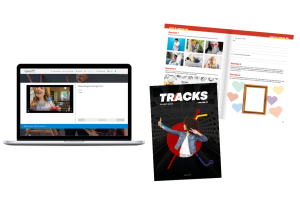Blended learning in school education: Guidelines

This paper examines the pedagogical opportunities and challenges of a blended learning model and highlights the key questions policy makers and schools might ask when planning blended learning in their specific context.
Blended learning is a flexible model that can support a project or course of study to progress, without teachers and students having to be in the same physical space at all times. It requires careful consideration of the pedagogical approach on how and when the different environments can best be used for independent research, collaborative research, social interaction and practical application.
Well-organized blended learning can have a number of advantages. It contains the idea that students are no longer just passive recipients of information and the teacher is not the only facilitator. The periods in school can improve students' social skills, well-being and sense of community and provide more personalized support for teacher learning.
Blended learning is a way to evolve towards a competence-oriented approach. For teachers, blended learning makes it possible to appreciate all students, to provide distinctive and personalized lessons. The ability to support students with special needs through blended learning was already evident before the COVID-19 crisis.
.
Log in or register to view the full educational resource
- free learning resources;
- for all ages and subjects;
- easily searchable on lesson topic.












